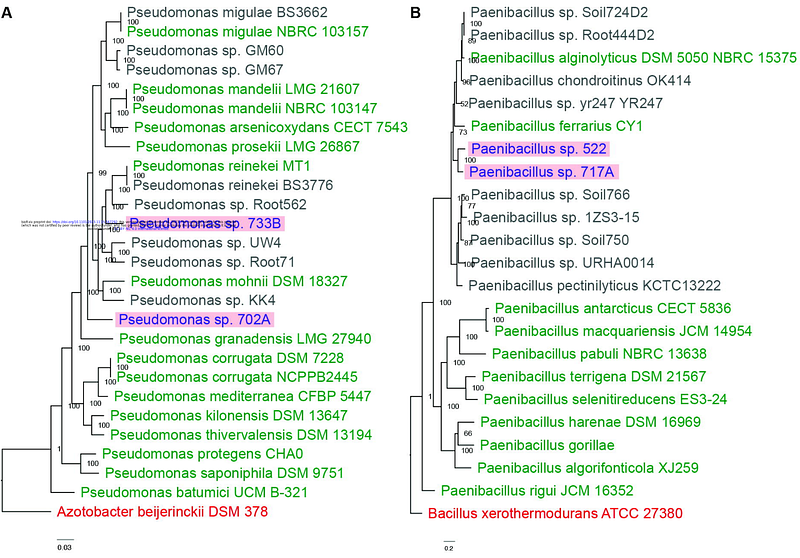Co-inoculation with novel nodule-inhabiting bacteria reduces the benefits of legume-rhizobium symbiosis

Co-inoculation with novel nodule-inhabiting bacteria reduces the benefits of legume-rhizobium symbiosis
Kosmopoulos, J. C.; Batstone-Doyle, R. T.; Heath, K. D.
AbstractThe ecologically and economically vital symbiosis between nitrogen-fixing rhizobia and leguminous plants is often thought of as a bi-partite interaction, yet studies increasingly show the prevalence of non-rhizobia endophytes (NREs) that occupy nodules alongside rhizobia. Yet, what impact these NREs have on the symbiosis remains unclear. Here, we investigated four NRE strains found to naturally co-occupy nodules with the rhizobium Sinorhizobium meliloti in native soils of the legume Medicago truncatula. Our objectives were to (1) obtain a taxonomic assignment of the NREs, (2) examine the direct and indirect effects of NREs on M. truncatula and S. meliloti fitness, and (3), determine whether NREs can re-colonize root and nodule tissues upon reinoculation. We identified two NRE strains (522 and 717A) as novel Paenibacillus species and the other two (702A and 733B) as novel Pseudomonas species. Additionally, we found that two NREs (Paenibacillus 717A and Pseudomonas 733B) reduced the fitness benefits obtained from symbiosis for both partners, while the other two (522, 702A) had little effect. Lastly, we found that NREs were able to co-infect host tissues alongside S. meliloti. This study demonstrates that variation of NREs present in natural populations must be considered to better understand legume-rhizobium dynamics in soil communities.